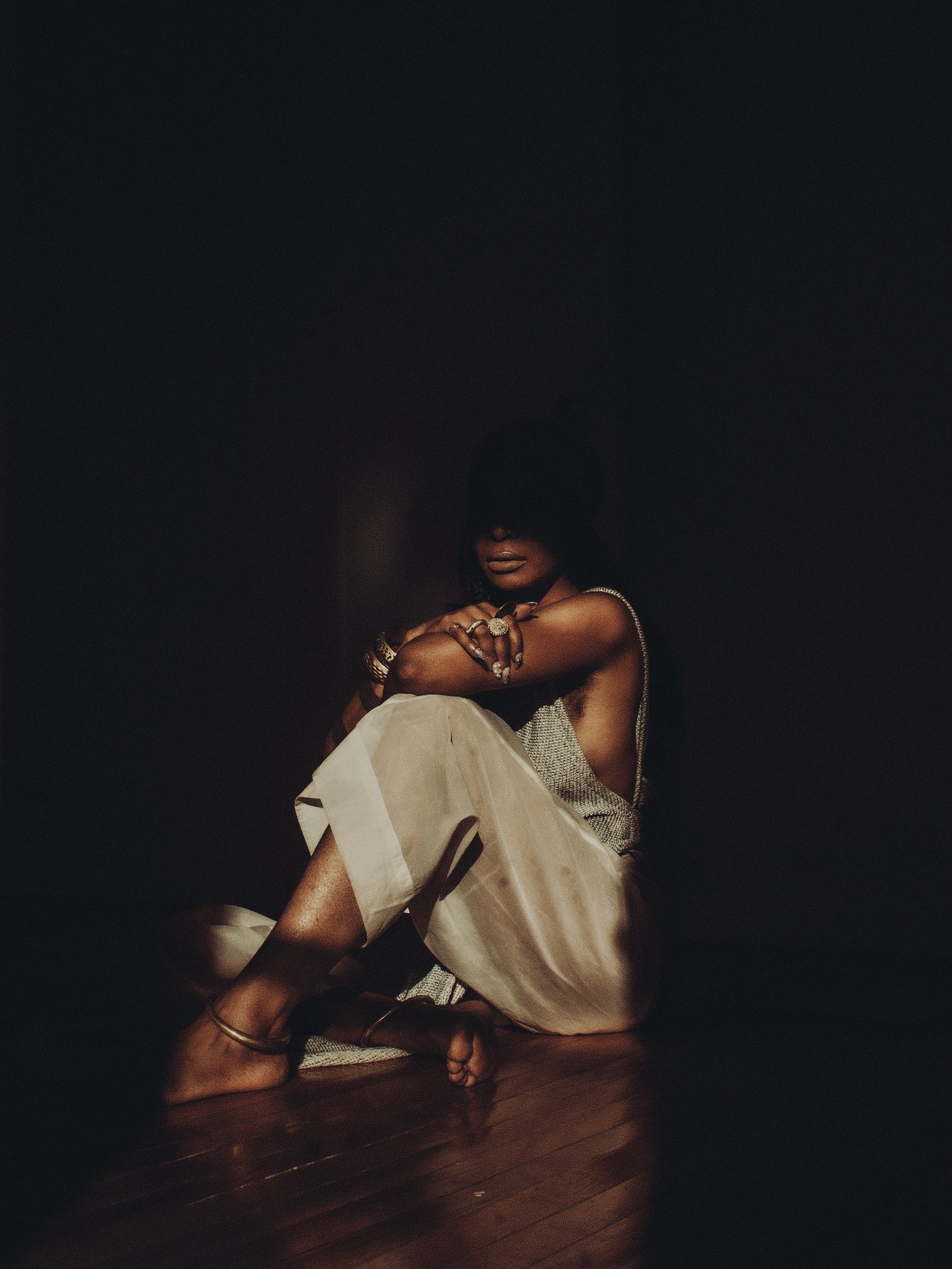
Detachment
Writer & Performer: Trae Harris
Director: Sonia Malfa
2015
Detachment Part 1 & Part 2 is an embodied exploration of release, transformation, and the rituals of letting go. Through a deeply personal yet universally resonant lens, this performance interrogates the emotional, spiritual, and cultural attachments women, particularly Black women, have to hair. It is an invitation to witness and reflect on the ways in which we tether ourselves to identity, memory, and materiality through the physical, and how we might reclaim our autonomy through the act of release.
For Black women, hair has long been a site of both reverence and regulation, politicized, scrutinized, and laden with meaning. Bell Hooks reminds us that “representation is the ‘hot issue’ in terms of the connection between race and gender. Who speaks? Who looks? Who determines the meaning of what is seen?” The politics of Black hair exist at this intersection, who defines beauty, and who controls the narrative?
Scholars like Patricia Hill Collins have written extensively about how hair functions as both a marker of resistance and assimilation, noting that “when Black women assert that their hair is beautiful despite its rejection by Eurocentric beauty standards, they do more than simply express personal preferences. They invoke a collective history of resistance”. Hair, then, becomes a battleground of self-definition, a medium through which social, historical, and spiritual narratives unfold.
As Tina M. Campt and Deborah Willis have explored in their work on Black visual culture and photography, hair, like images, becomes an archive of history and selfhood, carrying the weight of generations. Willis asserts that “the black body has served as a site of spectacle and exploitation, but it is also a site of resistance and reimagination” Similarly, Campt discusses how Black women’s images, often captured through the white gaze, have historically been used to control and commodify Black femininity, writing that “Black visuality resists and refuses the notion that Black bodies exist solely for external consumption” . Hair, in this context, is more than personal—it is political, spiritual, and deeply historical.
But what happens when we relinquish it? What is revealed in the act of cutting, shedding, or surrendering the strands that have served as a tether between self and world? Detachment asks these questions through performance, ritual, and introspection. The cutting of hair becomes more than an aesthetic choice, it is a ceremonial act of liberation, a severing of ties not only to societal expectations but to internalized constraints. It is a reckoning with selfhood beyond the physical, an excavation of what remains when the external markers of identity are stripped away.
Each aspect of this performance invites the spectator into their own process of interrogation: What are the attachments—physical, emotional, spiritual, that we hold onto out of habit, fear, or expectation? What does it mean to release, to surrender, to redefine oneself outside of the structures that have shaped us? Whether it is the tangible shedding of hair or the unseen unraveling of ego, Detachment is an offering, a meditation on what it means to let go and, in doing so, to reclaim something deeper.